Exploring Stand-Up Paddleboarding: Techniques and Lifestyle


Intro
Stand-up paddleboarding, often abbreviated as SUP, has carved a niche in the realm of water sports, capturing the attention of adventurers and fitness fanatics alike. As you paddle across serene lakes or race against ocean waves, it becomes clear that this sport blends elements of surfing and kayaking, creating a unique experience on the water. But what lies beneath the surface? This article embarks on a journey through the intricacies of stand-up paddleboarding, shedding light on essential techniques, necessary gear, and eco-conscious practices to enhance your time on the water. Let's take the plunge into understanding the art and lifestyle of SUP.
Surfing Techniques
With paddleboarding, mastering the basics can set you on the right course for enjoyable outings. Whether you’re a novice looking to find your footing or an experienced paddleboarder ready to take on new challenges, the techniques outlined below will enhance your SUP experience.
Beginner Tips for Getting Started
- Choosing the Right Spot: Start on calm waters like lakes or flat rivers. Avoid choppy or strong currents until you get the hang of balancing on the board.
- Proper Stance: Feet should be shoulder-width apart, with your knees slightly bent. Stand in the center of the board for stability.
- Paddle Techniques: Hold the paddle with one hand on the top and the other about halfway down the shaft. The blade should face away from you while paddling.
- Practice Falling: It's inevitable that you'll take a dip. Learning to fall safely, like falling away from the board and trying to stay relaxed, can help you recover quickly.
Advanced Maneuvers and Tricks
As you gain confidence, incorporating advanced maneuvers can add flair to your rides.
- Cross-Forward Paddling: This technique involves alternating strokes on either side of the board, which helps with steering and speed.
- Pivot Turns: Push down on the tail of the board and stroke on the opposite side to turn quickly. This is essential when navigating tight spots.
- Knee Paddling: Transitioning to your knees can offer a stable position while paddling through rough waters.
"Practice and persistence are your best pals on the path to mastering stand-up paddleboarding."
Surfboard Selection
Selecting the right board is crucial for maximizing your paddleboarding experience. Different boards cater to varied styles and environments, so understanding your needs is key.
Choosing the Right Board for Your Style
- All-Around Boards: Ideal for beginners, these boards are versatile, great for calm lakes, and can handle small waves.
- Touring Boards: Longer and narrower, these are suited for distance paddling and can traverse harsh waters effectively.
- Surf SUPs: If catching waves excites you, look for shorter, wider boards designed specifically for surfing.
Surfboard Maintenance and Care
Caring for your SUP can extend its life significantly. Here are some tips:
- Rinse After Use: Saltwater can corrode materials; make it a habit to wash your board with fresh water.
- Store Properly: Keep the board out of direct sunlight to prevent fading and material breakdown. A board bag can offer extra protection.
- Inspections: Regularly check for dings or dents that could become bigger issues if left untreated.
For more information on STAND-UP Paddleboarding, you might check out resources like Wikipedia or forums like Reddit.
In sum, understanding the techniques and gear involved in stand-up paddleboarding can enrich your experience on the water. Enjoying the serenity or thrill that comes with it is just the beginning of the adventure.
Prelims to Stand-Up Paddleboarding
Stand-up paddleboarding, often abbreviated as SUP, is more than just a leisure activity; it's a gateway to connecting with nature while enhancing physical fitness. As water sports gain popularity worldwide, understanding the nuances and benefits of paddleboarding is crucial for both newbies and seasoned enthusiasts. This section will delve into the origins of paddleboarding, explore the attraction of this exhilarating pastime, and provide a comprehensive overview of its significance in the water sports community.
Origin and Evolution of Paddleboarding
The roots of paddleboarding can be traced back to the ancient Polynesians who used sturdy, elongated boards to navigate their vast oceanic surroundings. These seafaring adventurers relied on their paddles for propulsion, showcasing not only a means of transportation but also their innate connection to the water. Fast forward to modern times, and paddleboarding has undergone a remarkable evolution.
In the late 1940s, the advent of modern surfing brought about a resurgence in interest. Surf lifeguards in Hawaii began standing on their boards to get a better view of the ocean and watch for swimmers in distress. This practicality evolved into recreational paddleboarding, eventually leading to the sport's popularization globally in the early 2000s.
Today, paddleboarding embraces a myriad of styles, ranging from flat-water cruising and yoga on boards to surfing ocean waves. This evolution mirrors the growing demand for unique outdoor experiences. Paddleboarding has transcended its humble origins, becoming a staple in many water sports enthusiasts’ routines.
The Appeal of Standing on Water
What makes stand-up paddleboarding so alluring? For many, it's the thrill of balancing on the water, a feeling that's hard to parallel. The simple act of standing on a board, glideing across the surface while surrounded by nature, taps into a primal sense of adventure and freedom.
Moreover, paddleboarding is accessible to all ages and skill levels, inviting everyone from families to fitness enthusiasts. The low barrier to entry, coupled with the social aspects - paddle with friends, join clubs, or take classes - fosters community engagement and connection. It's a sport that encourages exploration, whether navigating serene lakes at sunrise or tackling waves at sunset.
Standing on the water encourages a mindfulness practice; as paddlers navigate their surroundings, they often find a soothing rhythm that promotes mental clarity. A study published on the benefits of outdoor activities suggests that engaging with nature has profound effects on mental health, reducing stress and enhancing overall well-being, making paddleboarding a multidimensional experience.
In summary, the introduction of stand-up paddleboarding lays the groundwork for understanding both the physical and psychological rewards of this increasingly popular sport. Recognizing its rich history enhances appreciation and fosters respect as one embarks on their paddleboarding journey.
Required Equipment for SUP
Having the right gear is essential when diving into the world of stand-up paddleboarding. The equipment you choose will not only affect your performance on the water but also your overall enjoyment and safety. The right setup can make the difference between a serene glide across calm waters and a struggle against the elements.
Choosing the Right Paddleboard
Types of Paddleboards
Choosing the right type of paddleboard is often the first step any aspiring paddler should take. Each style has unique characteristics that cater to different needs and experiences. Common types include all-around boards, racing boards, touring boards, and surfing boards.
All-around boards are like the jack-of-all-trades of paddleboards — great for beginners, they provide stability and versatility for various activities. On the other hand, racing boards are long and narrow, designed for speed and performance. They can be intimidating for new paddlers due to their lack of stability but are preferred by competitive enthusiasts.
When considering paddleboards, think of them as tools, each tailored for a specific job in the water. The choice is indeed subjective; what's best for one person might not suit another. Plus, the weight and dimensions could greatly impact your overall experience.
Materials and Construction
The construction material of a paddleboard is vital, as it determines durability, weight, and performance. Most paddleboards are made from materials like epoxy, which is lightweight yet sturdy, or inflatable vinyl, offering portability without sacrificing too much stability.
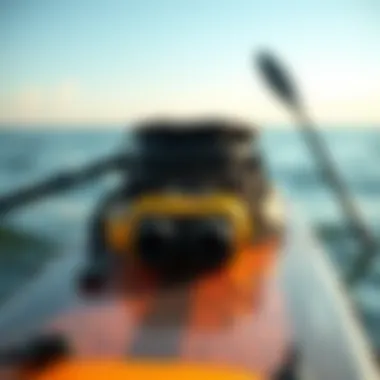
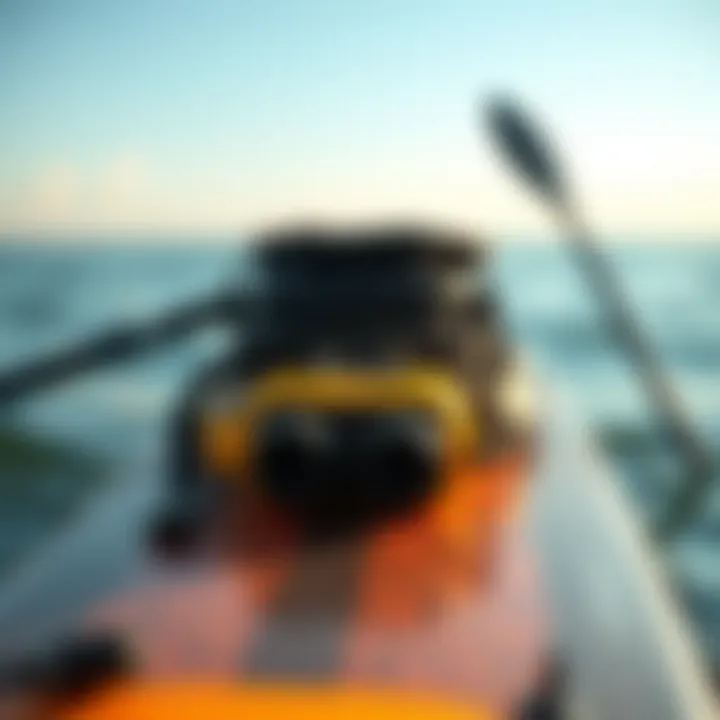
Epoxy boards are known for their rigidity and responsiveness, which can be a boon for more serious paddleboarders who want to precision their cuts and strokes. Inflatable boards, however, offer convenience; they're lightweight, easy to transport, and can be stored almost anywhere.
That said, they can feel less stable if you’re used to rigid boards. The key here is to understand your priorities — longevity versus portability, for instance.
Sizing Considerations
The size of the paddleboard can greatly influence your efficiency on the water. When talking about sizing, you need to keep in mind factors such as your weight, height, and the type of activities you plan on doing.
Boards typically range from about 10 to 14 feet in length. For instance, a person weighing around 200 pounds might benefit from a board in the 10.5 to 12-foot range. If racing is in your future, opt for the longer boards for better glide.
A board that’s too small can feel unstable, and one that’s too large may be difficult to maneuver. Thus, understanding these sizing guidelines and finding the right fit will greatly enhance your experience on the water.
Essential Accessories
To complete your paddleboarding setup, there are several accessories that can enhance not just safety, but also your overall paddling experience.
Paddles
The paddle is your primary means of propulsion, so it deserves careful consideration. Paddles generally come in three types: adjustable, fixed-length, and two-piece designs. Adjustable paddles offer versatility among users, making them ideal for families or friends sharing gear.
A fixed-length paddle favors serious paddlers who know their preferred length. The materials vary as well; lightweight carbon fiber paddles are favored for their ease of use and performance, while plastic models offer affordability and robustness, especially for beginners.
Lifesaving Gear
Safety should never be an afterthought when paddleboarding. Essential lifesaving gear includes personal flotation devices (PFDs), leashes, and first-aid kits. A well-fitted PFD can be the difference between a delightful day out and a potential disaster, ensuring that you can float should anything unexpected go down.
Indeed, many paddleboarders opt for belts or inflatable PFDs that don’t hinder movement while paddling, which is crucial.
Transportation Solutions
Lastly, transporting your paddleboard can be tricky if you don’t have the right solutions in place. Options range from rooftop racks for cars to carrying straps designed to make it easier to lug your board around.
Rooftop storage allows long boards to fit snugly while being transported securely. Meanwhile, straps can help you grip the board firmly without skidding against your arm or shoulder. Choose what works best for your lifestyle, but remember, easy transport can significantly affect your motivation to get out on the water.
Carefully selecting your paddleboarding gear not only boosts performance but also enriches the overall experience. Remember, happy paddling starts long before you hit the water!
Techniques for Paddleboarding
When it comes to stand-up paddleboarding, mastering the right techniques can mean the difference between gliding effortlessly over the water and battling to stay afloat. This section pulls back the curtain on essential paddling techniques that not only enhance your skills but also enrich your overall experience on the water. Whether you're navigating still lakes or catching waves by the shore, knowing these techniques will elevate your paddleboarding game significantly.
Basic Paddling Techniques
Stance and Balance
The foundation of any good paddleboarding experience starts with your stance and balance. Achieving the right stance can give you stability and control, enabling you to navigate and maneuver with ease. Ideally, your feet should be hip-width apart, with your weight evenly distributed. This gives you a solid base, so you don’t feel like you are teetering on a tightrope.
Being in the right position helps maintain your center of gravity, which is crucial when you encounter choppy waters or want to execute quick turns. A good stance isn’t just about the legs; it involves engaging your core muscles, which aids in keeping balance. Many paddleboard enthusiasts find that a slight bend in the knees offers better stability.
While it might seem simple, the necessity of a proper stance cannot be overstated. Failing to stabilize yourself can lead to discomfort and fatigue during longer sessions, which might put a damper on your paddleboarding adventures.
Stroke Mechanics
Stroke mechanics play a pivotal role in your efficiency and speed on the water. This involves how you use the paddle to propel yourself forward. The key characteristic of effective stroke mechanics lies in the combination of your body rotation and paddle entry. When executed properly, each stroke should be fluid, driving through the water smoothly, rather than pulling it awkwardly.
A common method is the "high-elbow" technique, which involves lifting your elbow slightly higher than your hand as the paddle enters the water. Not only does this minimize drag, but it also allows for a more powerful stroke. The unique aspect of stroke mechanics is that it doesn't only focus on your arms; your entire body should be involved, creating a coordinated movement that reduces fatigue and increases momentum.
Understanding and perfecting stroke mechanics can be a game-changer. For beginners, focusing too much on arm strength can lead to quick burnout. The goal is to integrate everything—the core, legs, and arms—for a balanced approach.
Advanced Maneuvers
As you gain confidence on the water, you may want to dive into advanced maneuvers that can take your paddleboarding skills up a notch. While these can be daunting at first, with practice, they can significantly enhance your experience.
Turning Techniques
Turning techniques are important when you need to change direction swiftly, especially in busy waterways. One common method is the pivot turn, where you place your paddle in the water towards the back of your board on the side you want to turn toward while shifting your weight accordingly. This helps in executing quick, tight turns without losing much momentum.
The key characteristic here is timing. Too much weight on the back, and you’ll risk tipping; too much on the front, and that can impede your flow. Mastering turning techniques not only adds versatility to your paddleboarding but also lends an air of mastery, impressing fellow paddlers along the way.
However, it's worth noting that gaining proficiency in turning takes time. Beginners might find sharp turns a bit challenging, so practice in calmer waters can be beneficial.
Surfing with a Paddleboard
Surfing with a paddleboard is a thrilling way to fuse two water sports into one. To catch a wave effectively, your board must be equipped for surfing—ideally a narrower design. Key to this is your timing and positioning as the wave approaches. Once you spot the wave, you want to paddle vigorously to gain momentum.
This technique is beneficial because it allows you to take advantage of ocean swells that traditional surfing can’t easily accommodate with a larger board. The unique feature of paddle surfing is that it grants more control over your line, enabling you to carve through waves with precision.
Riding waves does take practice. Newbies might struggle at first, but the feeling of catching a wave successfully is second to none, making it all worthwhile.
In sum, understanding and mastering these techniques can transform your paddleboarding journeys, whether you're just dipping your toes into the sport or ready to tackle the seas. For more tips and techniques, check resources like Reddit's Paddleboarding community or Paddleboarding Schools for comprehensive guides.
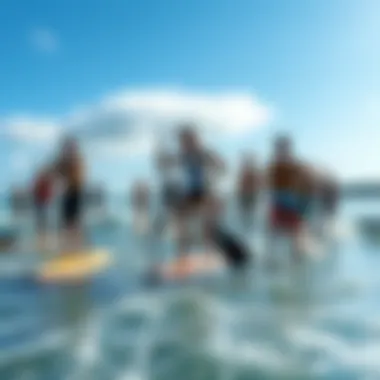
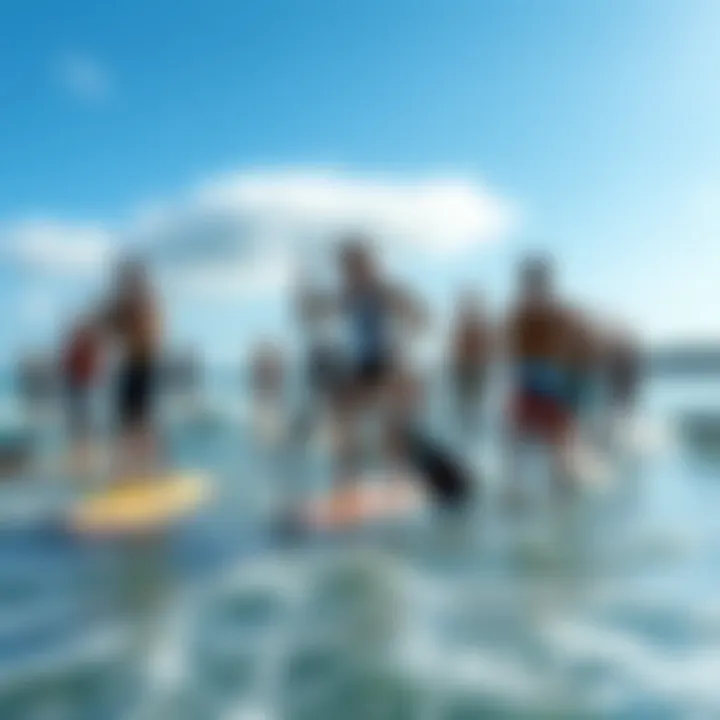
Riding the waves is just half the fun; understanding the techniques makes you a true paddleboarder.
Health Benefits of Paddleboarding
Paddleboarding is not just a thrilling water activity; it packs a punch when it comes to health benefits too. Striking that balance on a paddleboard engages the body in unique ways. From enhancing physical fitness to nurturing mental wellbeing, this sport presents a holistic approach to both health and leisure. This section dives into how paddleboarding cultivates strength, endurance, and alleviates stress while also promoting mindfulness.
Physical Fitness Gains
Core Strength Development
One of the standout gains from paddleboarding is the development of core strength. When you're balancing atop a board, you're not merely standing; every slight movement requires engagement of the muscle groups in your abdomen and back. This constant stabilization enhances your overall core strength, which is crucial for nearly every type of physical activity.
Why is Core Strength Important? It lays the groundwork for better posture, improves balance, and can even lessen the chance of injuries. The unique aspect of core strength gained from paddleboarding flows from its dynamic nature—you're constantly adjusting to the movement of water while paddling. Unlike traditional gym exercises, this functional strength translates well into everyday activities, making it a favored choice for fitness enthusiasts.
Endurance and Cardiovascular Health
When you’re out on the water, paddling requires sustained effort and can elevate your heart rate. This endurance aspect not only promotes cardiovascular health but also builds stamina over time. Regular paddleboarding sessions can improve your heart's efficiency, lower blood pressure, and boost overall circulation.
What Sets Paddleboarding Apart? It’s aerobic without being monotonous. The variety of environments—from placid lakes to rushing rivers—keeps you engaged both physically and mentally. Plus, getting outdoors while exercising offers an element of enjoyment that gym workouts may lack.
Mental Wellbeing
Stress Reduction
One of the often-overlooked benefits of paddleboarding is its ability to alleviate stress. Being surrounded by nature while gliding effortlessly on the water encourages a sense of peace and relaxation. The rhythmic motion of paddling can be meditative, allowing you to escape the daily grind and simply focus on the moment.
How Does It Work? The beauty of nature, combined with the gentle sounds of water, contributes significantly to lower cortisol levels—your body's main stress hormone. Paddleboarding provides a much-needed break, especially in today’s high-paced lifestyle, making it a popular choice for mental rejuvenation.
Mindfulness in Nature
Engaging in paddleboarding also fosters mindfulness, the practice of staying present and fully engaging with the environment around you. When you're out on the water, the act of paddling invites you to pay attention to your surroundings—the calm waters, the wind in your hair, the birds overhead. It’s a moment to connect more deeply with nature, which can have profound effects on your mental health.
Why Mindfulness Matters? Practicing mindfulness can enhance clarity, improve focus, and lead to emotional balance. Engaging with the natural world through paddleboarding allows for a refreshing perspective that can be hard to find amidst busy lives. It’s an enriching component that combines recreation with personal reflection.
Paddleboarding is more than just a sport; it's a pathway to physical vigor and mental peace. Its unique blend of exercise and engagement with nature helps foster not just a healthy body, but a healthy mind.
Environmental Considerations
As stand-up paddleboarding gains popularity, it brings forth not just the joy of gliding over water but also a significant responsibility towards our natural environment. As enthusiasts of this sport, it’s crucial to address the impact paddleboarding has on water bodies and the surrounding ecosystems. At the heart of this discussion lies a deeper understanding of how paddleboarders can engage with nature without causing harm, while also promoting the health of these precious aquatic resources.
Eco-Friendly Practices in SUP
Sustainable Equipment Choices
Choosing sustainable equipment is foundational in reducing one’s ecological footprint while enjoying the sport of paddleboarding. Many manufacturers are shifting toward environmentally friendly materials like bamboo, recycled plastics, and bio-based resins. Not only do these sustainable materials reduce reliance on fossil fuels, but they also minimize waste.
One key characteristic of sustainable equipment choices is durability. These boards often outlast their traditional counterparts, which means fewer boards are disposed of in landfills. Advancements in technology have made it possible to create lightweight yet strong boards that perform well in various conditions. However, the initial cost may be higher, posing a potential disadvantage for some beginners.
In essence, opting for equipment that values sustainability isn’t just beneficial for personal enjoyment, but it plays a crucial role in promoting a healthy planet. When paddleboarders select eco-friendly boards, they signal a collective intention to protect the environment they cherish.
Respecting Marine Life
Respecting marine life is another essential aspect of paddleboarding that can't be overlooked. Many species, including fish, turtles, and even manatees, inhabit the same waters where paddleboarders thrive. Paddleboarders must be vigilant, practicing caution to avoid disturbing these creatures, especially during mating or nesting seasons.
Understanding the habits of local wildlife is a key characteristic of respecting marine life. For instance, keeping a safe distance from schools of fish or not approaching resting seals ensures that we do not disrupt their natural behavior. Engaging in educational programs about local species can enhance a paddleboarder's experience while fostering a sense of stewardship.
Moreover, a unique element in this practice is the positive interaction between humans and wildlife, which can enhance one’s connection with nature. It creates a harmonious experience where paddleboarders can appreciate the beauty of the sea without causing disturbance. A downside is the necessity of being informed, which requires time and effort from paddlers, but the rewards are manifold, enriching both the sport and the environment.
Impact of Paddleboarding on Water Bodies
The impact of paddleboarding on water bodies is the crux of the environmental discussion. Paddleboards are relatively unintrusive compared to motorized watercraft, helping preserve the tranquility of natural habitats. However, careless interaction with our waterways can lead to erosion of shorelines, particularly in sensitive coastal environments.
When choosing launch and landing sites, it is advisable to select hard-packed areas rather than fragile dunes or marshlands. This practice preserves habitats critical for various species, ensuring their survival amidst human activities.
Moreover, it’s vital to consider how littering and pollution can disrupt aquatic environments. Paddleboarders have an opportunity to engage in community clean-ups, keeping our waters pristine. By fostering a culture of respect and responsibility towards water bodies, paddleboarding can blend enjoyment with conservation seamlessly.
“With great paddleboarding comes great responsibility.”
Popular Paddleboarding Destinations
Exploring the best paddleboarding locations is a crucial aspect of fully appreciating the sport. Paddleboarding isn't just about balance and strokes; it’s deeply tied to the environments where enthusiasts can practice their skills and enjoy stunning views. These destinations offer various benefits, including the chance to connect with nature, challenge one's abilities, and even discover new paddleboarding communities. The right location can transform a simple outing into an unforgettable experience with friends, family, or even solo.
Top Coastal Locations
Iconic Surf Spots
Iconic surf spots have a distinct allure for paddleboarders. These areas boast powerful waves, stunning scenery, and vibrant marine life. The adrenaline rush of catching a wave while standing on a paddleboard adds a unique twist to traditional surfing. Places like Malibu in California offer not only professional-grade waves but also an electric atmosphere where paddleboarders can mingle with surfers.
What sets these spots apart is often their consistent wave patterns. This consistency attracts paddleboarders looking for both excitement and a controlled environment to refine their skills.
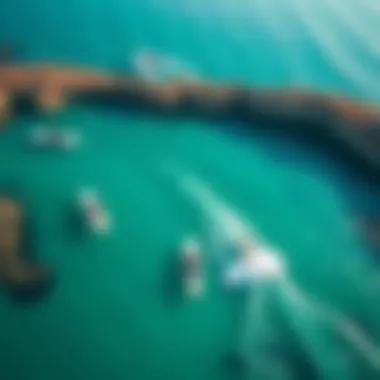
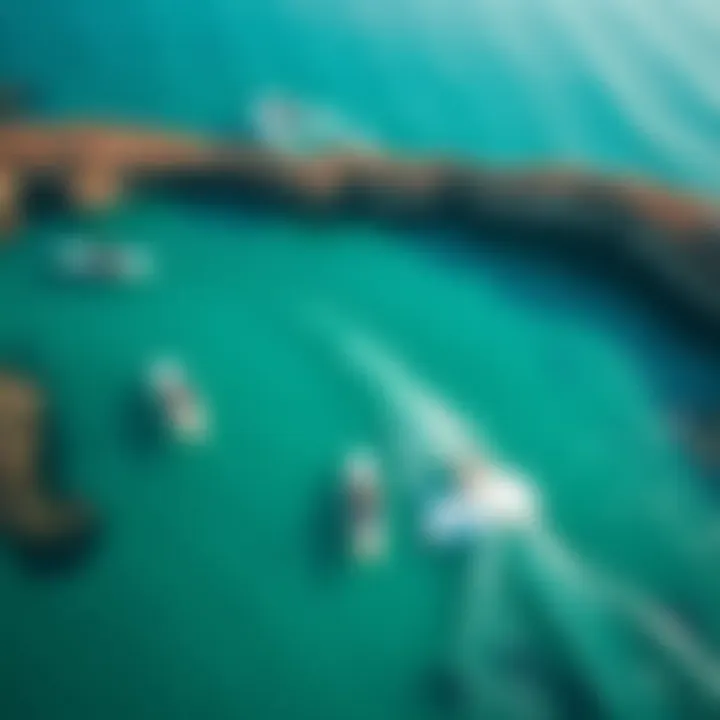
Unique Features:
- Wave Variety: Different types of waves suit various skill levels, making for an inclusive experience.
- Community Vibe: These spots attract both novices and pros, creating an environment ripe for shared learning and social interaction.
However, not every paddleboarder thrives in the hustle of crowded beaches. The noise and activity can be overwhelming. Therefore, it’s important to know one’s comfort level with more chaotic environments when selecting iconic surf locations.
Scenic Lakes and Rivers
Scenic lakes and rivers represent another slice of paradise for paddleboarding enthusiasts, offering a tranquil alternative to the ocean's waves. They often provide calmer waters, perfect for beginners or those looking to indulge in a more peaceful outing. Lakes such as Lake Tahoe showcase breathtaking views and clear water, making them ideal for leisurely paddling or yoga sessions on the board.
Key Characteristics:
- Calm Waters: Lakes and rivers generally have more stable conditions, providing a conducive atmosphere for those developing their technique.
- Natural Beauty: Many of these locations are tucked away in serene settings, perfect for enjoying nature’s aesthetic.
Advantages:
- Less crowded than coastal locations, giving a padded sense of solitude.
- Opportunities for wildlife sightings and photo ops abound, enhancing the experience beyond just paddleboarding.
On the flip side, some paddlers might find the lack of waves less stimulating, leading to slower-paced adventures. However, the peace and tranquility cannot be overstated, as they offer a restorative escape from the hustle and bustle of daily life.
International Paddleboarding Scenes
Moving beyond the domestic landscape, the international paddleboarding scene is vibrant and diverse. Countries like Thailand and Costa Rica have become hotspots, featuring stunning coastal and inland areas for paddleboarding enthusiasts. The variety in landscapes offers unique experiences that can cater to different tastes: crystal-clear waters in Thailand against lush tropical backdrops; pristine rivers winding through rustic towns in Central America.
Paddleboarding is not just a sport; it’s a passport to tranquility and exploration in remarkable locations around the globe.
Building a Community Around SUP
Building a community around stand-up paddleboarding (SUP) is paramount for both newcomers and seasoned paddlers alike. In this vibrant niche, friendships flourishes, knowledge gets shared, and the love for the sport grows deeper. When you're out on the water with others who share your passion, it’s not just about paddling; it’s about building memories that last a lifetime.
One of the core elements of community building is the support and encouragement provided by fellow paddlers. For beginners, finding a paddleboarding group means having the reassurance of knowing that you're not navigating these waters alone. Experienced paddlers can offer invaluable tips on everything from techniques to maintaining your gear, making the learning curve a whole lot gentler. Plus, sharing stories and experiences enhances the appreciation of this sport.
Being part of a group also opens the door to social interactions. Paddleboarding is as much a social thing as it is a sport. Many groups organize group outings or trips, allowing members to broaden their horizons—both literally and figuratively. It’s unique how a shared hobby can foster camaraderie, leading to friendships that might not have happened otherwise.
Moreover, being integrated into a SUP community can boost motivation. When you see others braving the waves or enjoying serene lakes, it inspires one to get out more often. There’s a certain energy that comes from being surrounded by like-minded enthusiasts, which can ignite your own passion for the water.
In summary, building a community around SUP is essential. Not only does it enhance the paddling experience, but it also serves as a vessel to share knowledge and foster friendships. Engaging with others through paddleboarding creates a rich tapestry of exploration and connection.
Joining a Paddleboarding Group
Joining a paddleboarding group can be a crucial step for anyone looking to enrich their experience in SUP. These groups vary in size and focus, ranging from local clubs to informal gatherings at popular paddle spots. For many, this becomes a first step into a broader lifetyle encompassing both sport and social experience.
When you join a group, you get a chance to learn new techniques and refine your skills. You might encounter individuals with varied experiences, all willing to share tips that can help you avoid common pitfalls. When beginners paddle alongside more seasoned enthusiasts, it creates a collective atmosphere of learning where everyone benefits. Plus, that moment when you finally nail a tricky maneuver, surrounded by cheers from your fellow paddlers, feels pretty ecstatic.
Moreover, these groups often create a strong sense of belonging. You’re part of something bigger, a tribe that not only shares a passion for water sports but also comes together through the flipping tides. Many groups also provide resources for members, such as access to equipment rentals, expert instruction, and opportunities to participate in events.
Events and Competitions
Events and competitions play a key role in the paddleboarding community, offering not only excitement but also a way to connect. They draw participants from various backgrounds, creating a mix of skills. Participating in these events can foster a sense of achievement, and they're often a hoot for spectators too.
Local Regattas
Local regattas are particularly charming. They are an excellent way for communities to come together and celebrate paddleboarding in a more informal setting. These friendly competitions often focus on camaraderie rather than cutthroat rivalry. What makes local regattas stand out is their accessibility—most anyone can join, regardless of skill level.
You’re likely to find an inviting atmosphere where chatty paddlers prime themselves for races filled with laughter and shared anticipation. Regattas usually feature a variety of race formats, from challenging long-distance paddles to more relaxed fun races. They also can serve as platforms for local vendors and sponsors, promoting awareness of products and eco-friendly practices. However, logistics—like weather conditions and equipment—can turn into challenges during local events, which is important to consider.
International Championships
International championships take the thrill a notch higher, showcasing the elite of the SUP world. These competitions are more formal, attracting top talents and serious competitors aiming for glory. They offer a spectacular display of skills and serve as benchmarks for striving paddlers.
Although these events have a more competitive edge, they are equally about cultural exchange. Participants from varied backgrounds come together, creating an exciting blend of paddling techniques and stories. While preparing for international championships can be demanding, the experience is rewarding for fans and paddlers alike. However, they can often require significant travel and financial costs, which might be a consideration for many.
End: The Future of Paddleboarding
As we paddle toward the horizon of the stand-up paddleboarding (SUP) experience, it becomes increasingly vital to consider how this evolving sport will shape our connection with the water and the world around us. Paddleboarding is not merely a recreational activity; it embodies a lifestyle choice influenced by environmental awareness, community engagement, and personal well-being.
Emerging Trends in SUP
The landscape of paddleboarding is seen to shift just like the currents of the sea. Innovations in technology are paving the way for safer, more efficient, and environmentally friendly equipment. For instance, the rise of inflatable paddleboards has made it easier for newcomers to enter the sport due to their portability and storage convenience. In addition, manufacturers are increasingly adopting sustainable materials, aiming to reduce their ecological footprint.
Moreover, the incorporation of smart technology—such as GPS tracking and fitness monitoring—into paddleboards is blending the realms of sport and technology. These tools can provide paddlers with crucial data on their performance, helping them improve while also promoting safety on the water. The focus is shifting from simply enjoying the ride to optimizing the experience through advanced analytics.
"The waves you ride today shape the tides of tomorrow."
Another significant trend is the expansion of SUP into diverse environments, from urban landscapes to remote lakes. Stand-up paddleboarding is becoming popular not only along coastlines but also in city waterways, allowing paddlers to explore urban scenery from a unique perspective. This expansion brings forth opportunities for community-building in various settings, strengthening the bonds among paddleboarding enthusiasts.
Final Thoughts for Enthusiasts
For those passionate about paddleboarding, the future holds limitless possibilities. Staying current with trends is essential, but equally important is remembering the core values of this sport: respect for nature, camaraderie among paddlers, and fostering mindfulness during time spent on the water. As SUP continues to thrive, it's important for enthusiasts to embrace these principles and to share their knowledge and experiences with newcomers.
Paddleboarding also serves as a powerful platform for advocating for environmental issues, such as water pollution and the protection of marine ecosystems. Engaging in clean-up events or conservation programs can add a deeper purpose to one's paddleboarding pursuits.
For additional resources on paddleboarding and related topics, check out:
- Wikipedia on Paddleboarding
- Environmental Considerations in Paddle Sports
- Local Paddleboarding Communities on Reddit
- Outdoor Enthusiasts Discussion Forums



